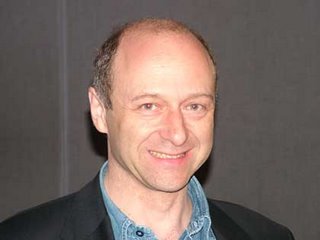 Iván Fischer’s tenure as the National Symphony Orchestra’s Principal Guest Conductor started with style this Thursday when he conducted his first concert in his new position. With a first half of musical fun and games (much of it in ¾) and Brahms Second Symphony after intermission, it was a promising beginning of a hopefully fruitful relationship.
Iván Fischer’s tenure as the National Symphony Orchestra’s Principal Guest Conductor started with style this Thursday when he conducted his first concert in his new position. With a first half of musical fun and games (much of it in ¾) and Brahms Second Symphony after intermission, it was a promising beginning of a hopefully fruitful relationship.Robert Henderson’s “Einstein’s Violin” was first on the program – chosen by Iván Fischer as a nod to Leonard Slatkin’s long championing of American (Anglo-American, in this case) contemporary music. The seven year old work’s title came about when Henderson tinkered with ideas about “Brownian Motions, the random collisions of molecules impended in a liquid or gas, which is the subject of one of Einstein’s famous papers.” So far, so vague – but even more of a stretch is the following explanation:
I was ruminating on the developmental parallel between the atomic bomb and dissonance in 20th-century (musical) harmony. I see a similar destructive and resoluble development in the 20th-century music. […] The parallel is in the manipulation of dissonance. Dissonance had formerly been a device used in music to create tension followed by resolution, but many composers in the 20th century released it to form a harmonic language of its own—so much that by mid-century they had alienated most of their audiences. In Einstein’s Violin, I’ve attempted to […] diminish the destructive impact of 20th-century dissonance.This is borderline offensive – and not just because I do not share Henderson’s aesthetic predisposition toward 20th-century music (Second Viennese School, Darmstadt School et al.). There is of course the silliness of the claim that even the most ‘antagonistic’ music of the 20th-century was “destructive” rather than an essential element that led to the variety of classical music styles of our day (the irony of a cul de sac that opened more new lanes of musical expression than any other musical development in over 300 years before it). That aside, nuclear weapons, in their very real destructiveness, have melted the flesh of scores of very real people… and even when mute have caused them very real dread and fear. Comparing that to the mere alienation a few listeners may have experienced due to accidental Boulez-, Stockhausen-, or Cage-exposure is off the mark.
If this sentiment of Henderson’s elicits disagreement on my part (there may well be those who agree with his sentiments more than I do), the music of Einstein’s Violin deserves nothing but praise: It opens like a wildly moving, strong shock of hair amid shimmering violins and percussion (prominent the Glockenspiel), then followed by a lament courtesy of the oboe. Colorful, rich sonorities, the musical winding along the gentle outer reaches of tonality (easy on the ears), and hectic violin section run-ups with releases of percussion thuds all made for an orchestral showpiece very worthy of being premiered by the NSO.
Daniel Ginsberg, Off to a Refreshing Start (Washington Post, December 1) Interview with Iván Fischer (WGMS/ionarts October 2006) |
Brahms’ Second, for a second time in two nights – courtesy of a WPAS/NSO administrative SNAFU – is less than ideal a situation for the avid concertgoer (although still more appealing than just about any other Second Symphony played twice in a row), but it also offered an illuminating comparison between the London Philharmonic under Kurt Masur and Iván Fischer with the NSO. With a softer, clearer, and more caring rendition, the NSO scored more points in every detail of the work and emerged the clear winner. A much finer string sound, a better balance between brass and the other orchestral sections (set up in Fischer’s preferred style – antiphonal violins, basses centre-back, horns left, other brass right), and generally more loving treatment (rough brass moments not withstanding), this was well worth hearing even (or especially?) for those who had attended Wednesday’s Masur-led performance. The third movement tip-toed with its light gait, then became languid and relaxed. The fourth movement came out in all its splendor – a true Allegro and rock-steady in its beat.
The performance, repeated today, Friday, at 7PM, and tomorrow, Saturday, at 8PM, was a treat – and leaves us with our hopes high for future Fischer appearances.